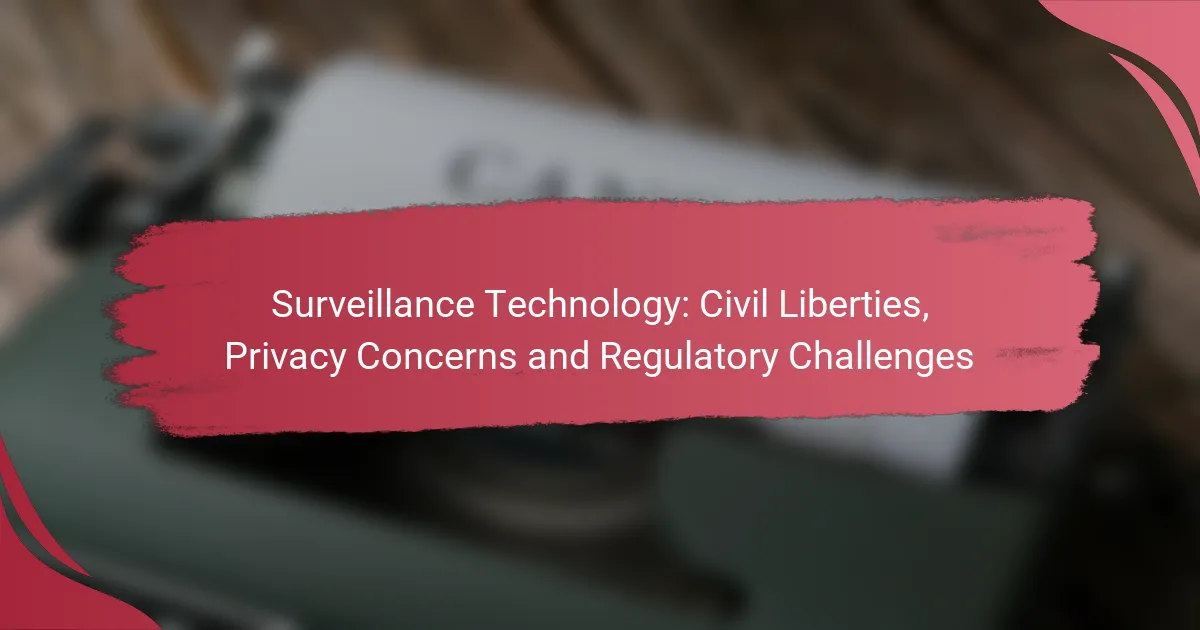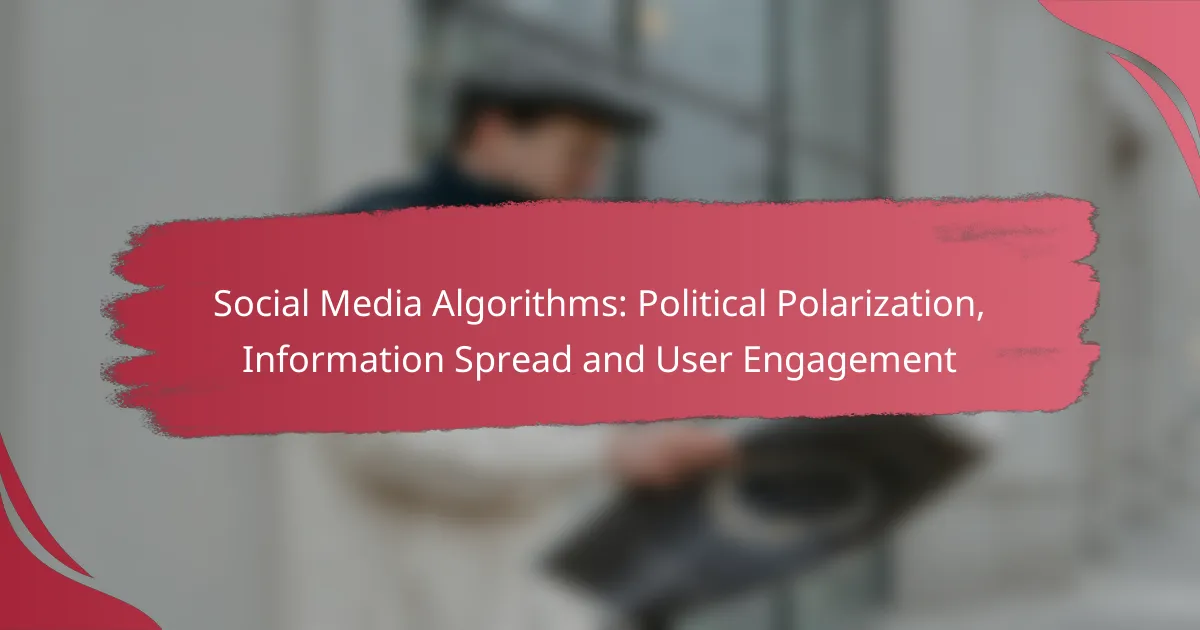Surveillance technology has transformed the landscape of civil liberties, enhancing monitoring capabilities while simultaneously raising significant privacy concerns. Tools such as facial recognition, drone surveillance, and biometric monitoring enable extensive tracking of individuals, often without their consent, prompting urgent discussions about the balance between security and personal freedoms. However, the regulatory framework governing these technologies remains fragmented and inconsistent, complicating efforts to safeguard individual rights in an increasingly monitored society.
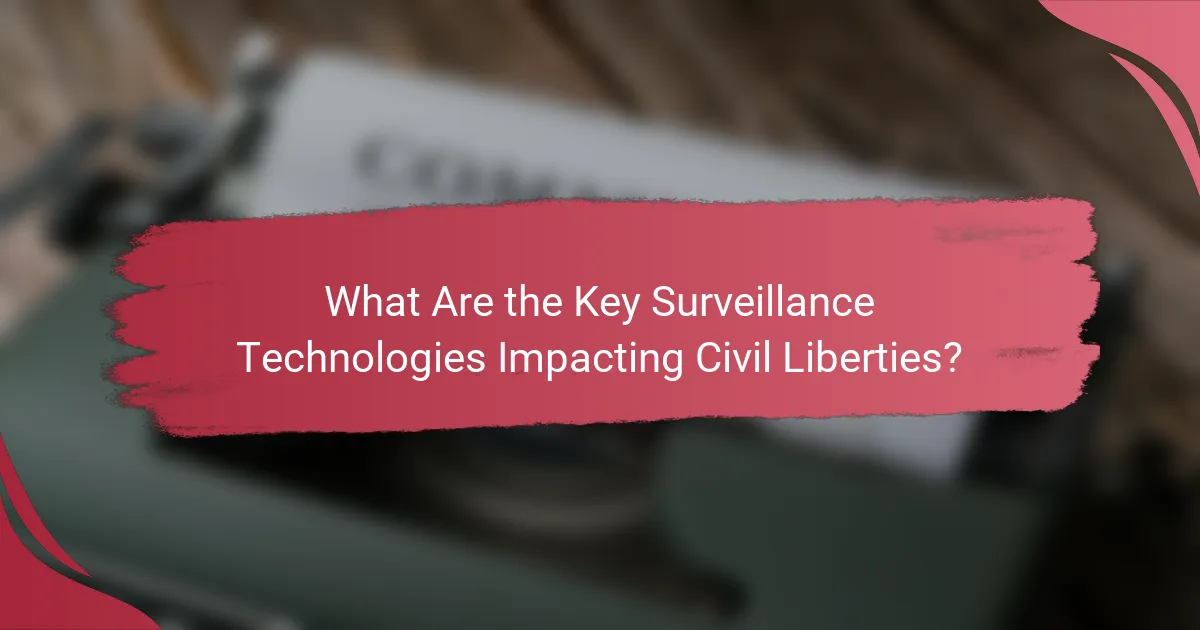
What Are the Key Surveillance Technologies Impacting Civil Liberties?
Key surveillance technologies significantly affect civil liberties by enhancing monitoring capabilities while raising privacy concerns. These technologies include facial recognition systems, drone surveillance, license plate readers, Internet of Things (IoT) devices, and biometric monitoring, each presenting unique challenges and implications for individual rights.
Facial Recognition Systems
Facial recognition systems analyze facial features to identify individuals, often using databases of images. While these systems can enhance security measures, they pose risks of misidentification and potential abuse, particularly in public spaces.
Regulations governing facial recognition vary by region, with some jurisdictions implementing strict guidelines to protect privacy. Users should be aware of local laws and consider the ethical implications of deploying such technology.
Drone Surveillance
Drone surveillance involves the use of unmanned aerial vehicles equipped with cameras and sensors to monitor areas from above. This technology can be beneficial for law enforcement and emergency response but raises significant privacy concerns, especially in residential areas.
Regulatory frameworks for drone usage often require permits and adherence to specific flight paths. Individuals should advocate for transparency regarding drone operations in their communities to safeguard their privacy rights.
License Plate Readers
License plate readers (LPRs) capture and analyze vehicle license plates, enabling law enforcement to track vehicle movements. While LPRs can assist in crime prevention, they also create databases that may infringe on privacy if misused.
Many regions have implemented policies to limit data retention periods and restrict access to LPR information. Citizens should inquire about local regulations to ensure their rights are protected against unwarranted surveillance.
Internet of Things (IoT) Devices
IoT devices, such as smart cameras and home assistants, collect and transmit data, often without explicit user consent. While these devices can enhance convenience and security, they can also lead to unintentional surveillance and data breaches.
Users should regularly review privacy settings and be cautious about the data shared with IoT devices. Understanding the terms of service and potential vulnerabilities can help mitigate risks associated with these technologies.
Biometric Monitoring
Biometric monitoring utilizes unique physical characteristics, such as fingerprints or iris patterns, for identification and tracking. This technology is increasingly used in security systems but raises concerns about data security and personal privacy.
Regulations around biometric data collection are evolving, with some regions enforcing strict consent requirements. Individuals should be vigilant about how their biometric data is collected, stored, and used, ensuring compliance with applicable laws to protect their civil liberties.
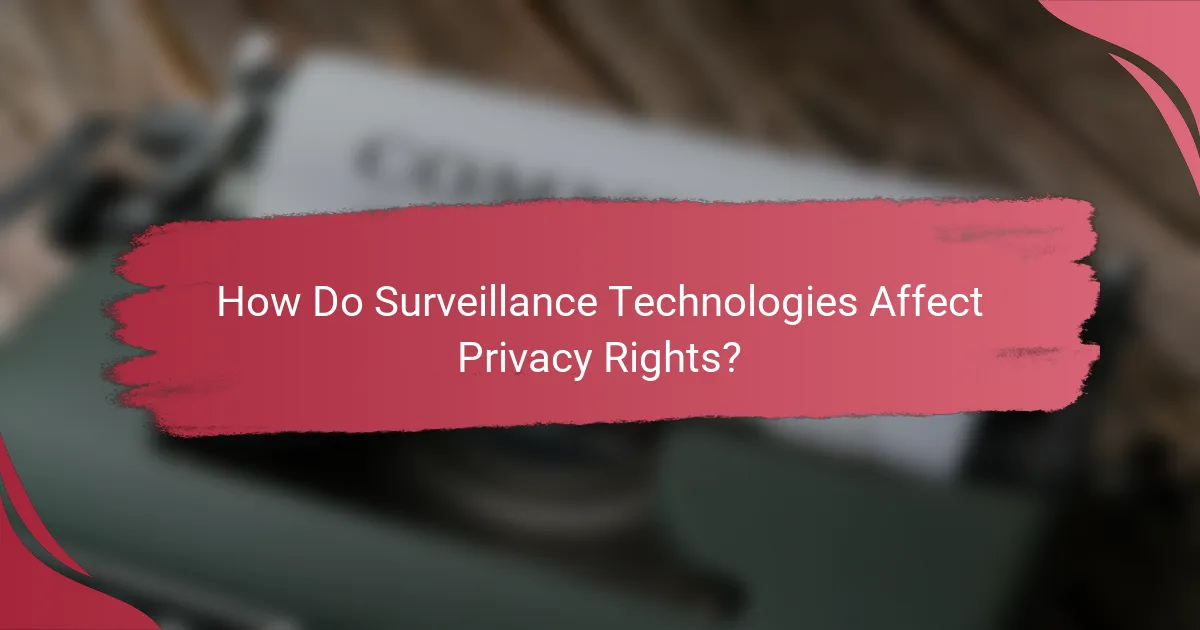
How Do Surveillance Technologies Affect Privacy Rights?
Surveillance technologies significantly impact privacy rights by enabling extensive monitoring of individuals’ activities, often without their consent. This increased scrutiny raises critical questions about the balance between security and personal freedoms.
Increased Data Collection
Surveillance technologies facilitate the collection of vast amounts of personal data, often from various sources such as social media, public records, and online activities. This data can include location tracking, communication logs, and biometric information, leading to a comprehensive profile of individuals.
For instance, law enforcement agencies may utilize facial recognition systems that analyze images from public cameras, increasing the potential for tracking individuals in real-time. As a result, individuals may unknowingly contribute to a database that monitors their movements and behaviors.
Potential for Misuse
The extensive data collected through surveillance can be misused by authorities or malicious actors, leading to violations of privacy rights. For example, data intended for crime prevention could be exploited for discriminatory profiling or unauthorized surveillance of specific groups.
Moreover, inadequate regulations may allow for the retention and sharing of personal data without proper oversight, increasing the risk of breaches and misuse. Individuals should be aware of their rights regarding data protection and the potential for misuse in their jurisdictions.
Chilling Effects on Free Speech
Surveillance technologies can create a chilling effect on free speech, as individuals may self-censor their opinions and actions when they know they are being monitored. This fear of repercussions can stifle open dialogue and discourage participation in public discourse.
For example, activists and journalists may hesitate to express dissenting views or report on sensitive issues if they believe their communications are being surveilled. This environment undermines democratic principles and the fundamental right to free expression.
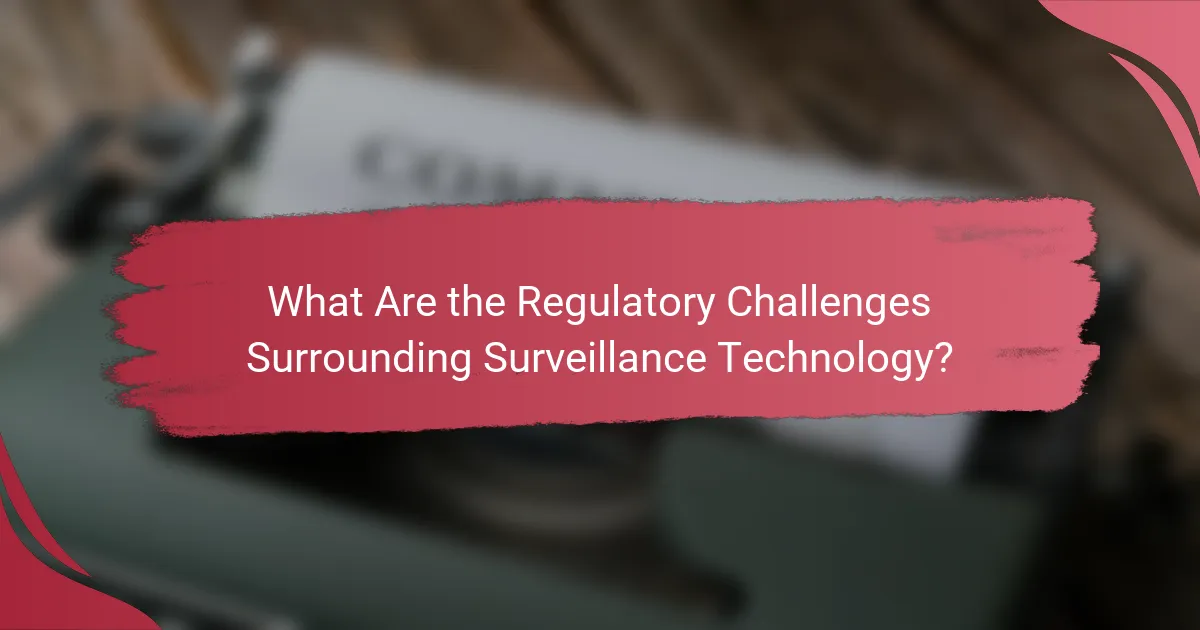
What Are the Regulatory Challenges Surrounding Surveillance Technology?
Regulatory challenges surrounding surveillance technology primarily stem from the lack of comprehensive laws, inconsistent regulations across states, and difficulties in enforcement. These issues complicate the protection of civil liberties and privacy rights in an increasingly monitored society.
Lack of Comprehensive Legislation
The absence of a unified legal framework for surveillance technology means that many aspects of its use remain unregulated. This can lead to significant gaps in privacy protection, as existing laws may not adequately address modern surveillance capabilities. For instance, technologies like facial recognition and data mining often operate in a legal gray area.
Without comprehensive legislation, individuals may find it challenging to understand their rights regarding surveillance. Advocates argue for the need for clear laws that define acceptable practices and set boundaries on data collection and usage.
Inconsistent State Regulations
In the United States, regulations governing surveillance technology can vary significantly from one state to another. Some states have enacted strict laws limiting surveillance practices, while others have few or no regulations in place. This inconsistency can create confusion for both consumers and businesses regarding compliance and privacy rights.
For example, states like California have implemented robust privacy laws, while others may allow more lenient surveillance practices. This patchwork of regulations can hinder effective oversight and enforcement of privacy protections.
Challenges in Enforcement
Enforcing existing surveillance regulations poses significant challenges for authorities. Limited resources, varying interpretations of laws, and the rapid evolution of technology can make it difficult to hold violators accountable. Law enforcement agencies may struggle to keep pace with new surveillance methods, complicating regulatory compliance.
Moreover, the lack of standardized procedures for reporting and investigating surveillance abuses can lead to underreporting of violations. Stakeholders advocate for improved training and resources for enforcement agencies to better address these challenges and protect civil liberties.
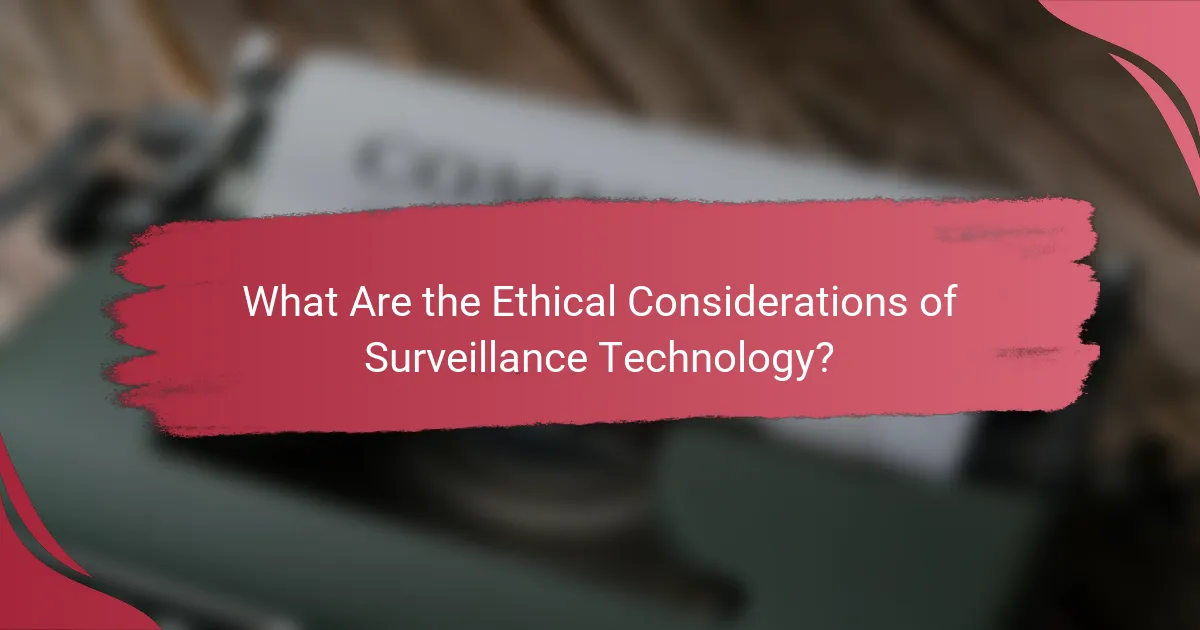
What Are the Ethical Considerations of Surveillance Technology?
Surveillance technology raises significant ethical considerations, particularly regarding civil liberties and individual privacy. Key issues include consent, transparency, discrimination, and bias, which can impact how these technologies are perceived and regulated.
Consent and Transparency Issues
Consent and transparency are critical in the ethical landscape of surveillance technology. Individuals often lack clear information about how their data is collected, used, and shared, leading to a breach of trust. Organizations must prioritize obtaining informed consent, ensuring that users understand the implications of surveillance.
Transparency can be enhanced through clear privacy policies and regular disclosures about surveillance practices. For example, companies could implement user-friendly interfaces that allow individuals to opt-in or opt-out of data collection easily. This approach not only respects user autonomy but also fosters accountability.
Discrimination and Bias
Discrimination and bias are significant concerns associated with surveillance technology. Algorithms used in surveillance systems can inadvertently perpetuate existing societal biases, leading to unfair treatment of certain groups. For instance, facial recognition technology has shown higher error rates for individuals from minority backgrounds, raising ethical questions about its deployment.
To mitigate these issues, organizations should conduct regular audits of their surveillance systems to identify and address bias. Implementing diverse datasets for training algorithms can also help reduce discriminatory outcomes. Additionally, involving community stakeholders in the development and evaluation of surveillance technologies can promote fairness and equity.
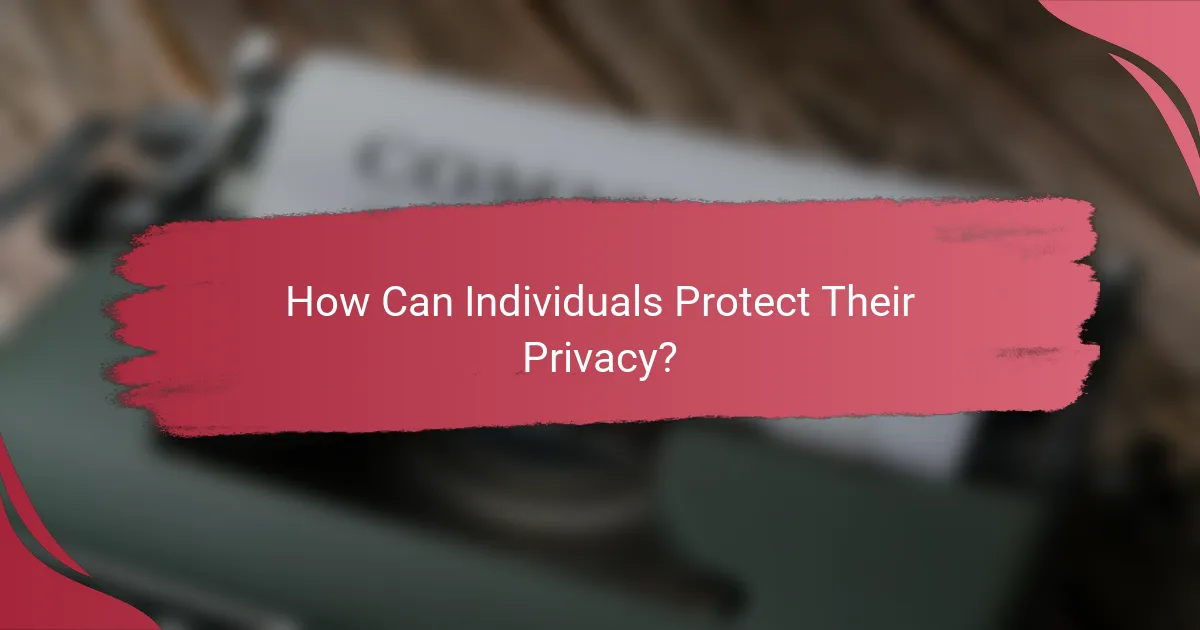
How Can Individuals Protect Their Privacy?
Individuals can protect their privacy by adopting various strategies and tools designed to enhance data security and limit surveillance. Key methods include using encryption tools, being cautious with personal information sharing, and understanding privacy settings on digital platforms.
Using Encryption Tools
Encryption tools safeguard your data by converting it into a coded format that only authorized users can access. This is essential for protecting sensitive information, especially when using public Wi-Fi networks or storing files in the cloud.
Popular encryption tools include software like VeraCrypt for file encryption and Signal for secure messaging. When choosing an encryption tool, consider its ease of use, the strength of its encryption standards, and whether it is open-source, which can enhance transparency and trust.
Always remember to keep your encryption keys secure. Losing access to your keys can result in permanent loss of your encrypted data. Regularly update your tools and stay informed about any vulnerabilities that may arise.
